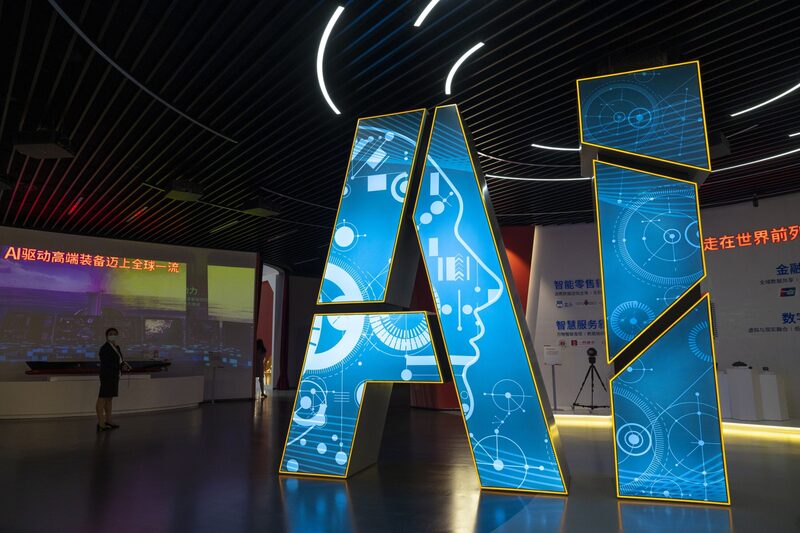Barcelona, Spain — As organizations try to stay ahead in the race to harness the power of artificial intelligence (AI), a wave of mergers and acquisitions (M&As) is beginning to take shape that promises to reshape the competitive landscape.
With the technology more integrated into companies, funding for AI startups has been slashed and the sector is now entering a consolidation phase.
These findings come from a study by CB Insights, which shows that the generative AI push could not save AI funding from a sharp drop in the first quarter of 2023. Specifically, there was a 71.4% drop in global investments in the sector, which totaled $5.4 billion in the quarter, compared to $18.9 billion in the same period of last year. Compared to the fourth quarter of 2022, the drop was 43%.
At the same time, M&As increased by 12% quarter over quarter. There were 75 such transactions in the sector. Although still below the 2021 highs, it represents a significant change in trend. On the other hand, IPOs remained scarce in the first quarter for AI companies: there were only 2 initial public offerings (IPOs) and none through a special purpose acquisition vehicle (SPAC).
On the buyers’ side, the risk has decreased because these startups have proven that their pilot tests are working and this is the time to buy them before they scale, explains Jorge Calvo, vice dean of GLOBIS School of Management Tokyo and a professor at ESADE Business School. It is also a strategic opportunity to prevent companies with great potential from going to competitors, he said.

From the vendors’ point of view, the more challenging macroeconomic scenario, with the higher cost of credit, makes the occasion propitious to recoup investments. “In addition to the fact that AI is starting to be somewhat mature, large funds are investing less because they are focused on realizing benefits and mitigating risks,” Calvo said.
Latin American unicorns’ plans
Argentina’s Aivo, which develops AI-based customer service software, is listening to offers from potential buyers, its CEO and founder, Martin Frascaroli, revealed to Bloomberg Línea. “We have two natural ways to grow and gain market share: one is to raise capital, put together a whole sales team and look for the customers and the other is to find us someone who already has the customers that are compatible with our solution and accelerate the growth process. That benefits us and can benefit the other company,” he said.
According to Frascaroli, this is a strategic decision by the company to take advantage of market momentum. The company, incorporated in the US and with a presence in 11 Latin American countries, expects to invoice $15 million this year.
“We are in a super exploratory process, there are no advanced talks, but we are talking with venture capital funds and also with companies that are strategic, for which our solution adds value,” explains Frascaroli.
In the case of Globant, the idea is to buy, its co-founder and EMEA president, Martin Umaran, told Bloomberg Línea.
“When companies reach a certain size, it’s harder for them to innovate. Sometimes an M&A is the fastest way to capture new technologies and gain market share more efficiently,” Umaran said, noting that the company’s goal is to “keep growing and generating value”.
The Argentine software giant’s appetite for acquisition is not new. In the last three years, it has acquired around 10 companies, Umaran explained, without mentioning the amounts invested.
The plan, now, he says, is to invest in all of Globant’s processes that include artificial intelligence, especially those related to Large Language Models (LLMs) and to the financial, retail and travel and leisure sectors.
“For that we will clearly have to make acquisitions and have some of the companies we have created work on a standalone basis to take better advantage of the product’s lateral nature,” he said.
An ‘oasis’ called Silicon Valley
Although global funding of AI companies has fallen this year, including in the United States (27% lower in first quarter, compared to the final months of 2022), Silicon Valley saw an upturn.
In the epicenter of the world’s cutting-edge technology hub, investments and the number of deals grew, respectively, by 41% and 20%.
According to a CB Insights study, this increase in funding was driven by mega rounds worth $1.2 billion in total going to a handful of generative AI companies based in the region.
“Silicon Valley is already in the next wave of AI, dedicated to the development of multimodal learning, more refined systems that in addition to text, images and videos will have the ability to interpret and produce other content formats,” explains Jorge Calvo, author of the book Journey of the Future Enterprise.





